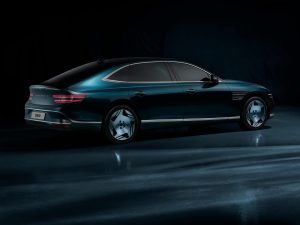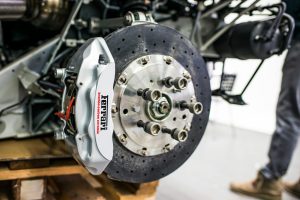Hybrid Powertrains Gain Momentum as EV Growth Slows
In recent years, the demand for electric vehicles (EVs) has been steadily increasing thanks to advancements in technology and a growing concern for the environment. However, news of a slowdown in EV sales may come as a surprise to some. While it’s true that EVs are still gaining traction, there has been a noticeable shift towards hybrid powertrains. In fact, hybrid powertrains are gaining momentum amidst a temporary lull in EV growth.
Here’s why hybrid powertrains are proving to be a worthy alternative to pure electric vehicles.
The Rise of Hybrid Powertrains
First, let’s clarify what exactly a hybrid powertrain is. A hybrid powertrain is a combination of both an internal combustion engine and an electric motor. It allows for both traditional fuel-powered driving and electrically-powered driving. This combination of technologies provides the best of both worlds – the efficiency of an electric vehicle and the convenience of a gas-powered car.
The demand for hybrid vehicles has increased in recent years, with a forecasted market share of up to 11% by 2025. This is a significant jump from the mere 1.5% market share in 2017. So what’s driving this change?
Fuel Efficiency
One of the main reasons for the rise in hybrid powertrains is their fuel efficiency. With rising fuel costs and stricter emissions regulations, consumers are looking for ways to save on gas while minimizing their carbon footprint. Hybrid powertrains offer a solution by reducing the overall amount of fuel consumed, resulting in cost savings for the consumer and reduced carbon emissions for the environment. In addition, many hybrid vehicles also have a regenerative braking system that helps to recharge the battery, making them even more fuel-efficient.
Cost Savings
Hybrid powertrains also offer significant cost savings compared to pure electric vehicles. While EVs still come at a premium price, hybrid vehicles often have a lower price point. In addition, they require less maintenance, as the electric motor does not require oil changes or belt replacements. This cost-effective option is attractive to many consumers, especially those looking to switch to a more environmentally-friendly option without breaking the bank.
Range Anxiety
Range anxiety is a term used to describe the fear of running out of charge while driving an electric vehicle. This has been a significant concern for many potential EV buyers. With hybrid powertrains, this is not an issue. Drivers have the convenience of driving on fuel when needed, without the worry of being stranded without a charging station nearby. This makes hybrid powertrains a more practical choice for those who rely on their vehicles for daily commutes or long-distance trips.
Infrastructure Limitations
Another factor contributing to the rise of hybrid powertrains is the limited infrastructure for EV charging stations. Unlike gas stations, charging stations are not yet as widespread, making it more challenging for EV drivers to plan long trips. This has made many consumers hesitant to make the switch to electric vehicles. Hybrid powertrains, on the other hand, do not require charging stations, making them a more hassle-free option for now.
The Future of Hybrid Powertrains
It’s clear that hybrid powertrains are gaining momentum as EV growth slows down. This trend is expected to continue in the coming years, with more car manufacturers investing in hybrid technology. In addition, the push towards alternative fuel sources and stricter emissions regulations will only further drive the adoption of hybrid vehicles.
Furthermore, with advancements in technology, hybrid powertrains are becoming more advanced and efficient, with new models offering longer ranges and improved fuel economy. This will only make them a more attractive option for consumers looking to make a more environmentally-conscious choice.
The Perfect Bridge
Hybrid powertrains are proving to be the perfect bridge between traditional gas-powered vehicles and fully electric cars. They offer convenience, cost savings, and reduced emissions – all while addressing concerns like range anxiety and infrastructure limitations. As the automotive industry continues to evolve towards more eco-friendly solutions, hybrid powertrains will undoubtedly remain a popular choice.
Conclusion
While the growth of electric vehicles may have slowed temporarily, the future still looks bright for alternative fuel vehicles. Hybrid powertrains are paving the way for a more sustainable and efficient future of transportation. With a growing demand for more eco-friendly options, it’s clear that the rise of hybrid powertrains is here to stay.







